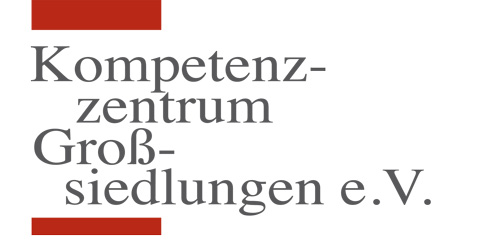Großstadt-Narrative und Integration – In Wort, Bild und Film

DQDS at bauhaus reuse, Berlin, 2017, © zukunftsgeraeusche
Prof. Dr. Franziska Bollerey
Mythos Metropolis – Die Vision der Narratoren
Seit einigen Jahren hat sich der Begriff des Narrativen inflationär verbreitet. So ist zum Beispiel unter anderem die Rede von „narrativen Städten“. Der lateinische Ausdruck „Narrata refero“ verweist aber auf die Widergabe von bereits Erzähltem und nicht auf die Referierung persönlicher Erfahrungen und ihrer Interpretation. Da Städte nicht selbst aktive Erzähler sein können, bedürfen sie der Schöpfungen von Narratoren. In einem kreativen Prozeβ vermitteln diese als Schriftsteller, Maler oder Regisseure ihre Sicht auf die groβe Stadt. Das von ihnen Erzählte kann eine sanfte Lesart widerspiegeln, das Überwältigende und Bedrohliche aufzeigen, oder Zeugnis vom Assimilationsprozeβ des Künstlers mit der metropolitanen Umgebung ablegen. „In Paris angelangt, war ich endlich imstande, die irgendwie lunarische Freude auszudrücken…In Paris hatte ich endlich die Vision von dem, was ich erreichen wollte. Ich entdeckte dort eine neue psychische Dimension meiner Malerei und wußte, daß dort meine Heimat war“, schreibt 1928 Marc Chagall. Bereits ein knappes Jahrhundert zuvor konstatiert Christian Friedrich Hebbel: „In Paris bin ich sehr gern…es ist doch ein ganz anderer Strom auf dem man segelt….Paris ist keine Stadt, sondern eine Welt, wenigstens hat man nirgends so viel auf einmal von der Welt beisammen, wie hier.“
Belege für diese Faszination, Teil der groβen Stadt geworden zu sein, sind zahlreich. „Es lag in Manhattan etwas unerklärlich Erregendes in der Luft, das die Arbeit anstachelte….die Stadt war geladen mit Eindrücken, und ich brannte von Schaulust,“ so George Grosz: und Theodore Dreiser über New York: “It is the city consciousness. Which sees and says: More and more: always more….nowhere is there anything like it. My city. Not London. Not Paris. Not Moscow. Not any city I have ever seen. So strong, so immense. So elate.”
Und Wim Wenders kommentiert: “Ich brauche die Stadt als meine Existenzbedingung….da habe ich alles was ich brauche, physisch und psychisch, als Stadt um mich herum.“ Wie er in einem Interview „find myself a city to live in“ betonte, war das für ihn Berlin.
Die psychisch-physische Konditionierung des Groβstadtmenschen beschreibt Georg Simmel in seinem immer wieder zitierten Aufsatz „Die Groβstädte und das Geistesleben“ : „Beharrende Eindrücke, Geringfügigkeit ihrer Differenzen, gewohnte Regelmäβigkeit ihres Ablaufs und ihrer Gegensätze verbrauchen…weniger Bewuβtsein, als die rasche Zusammendrängung wechselnder Bilder, der schroffe Abstand innerhalb dessen, was man mit einem Blick umfaβt, die Unerwartetheit sich aufdrängender Impressionen….Daraus wird vor allem der intellektualistische Charakter des groβstädtischen Seelenlebens begreiflich.“ Die von Simmel analysierte Vielfalt und Kollision von Eindrücken bewältigen die Narratoren oft mit dem Mittel der bildlichen Amalgamierung. Mit der Montage versucht die Kunst, die von den veränderten Produktionsweisen bestimmte industrielle Welt mit deren eigenen Mitteln in die Schranken zu weisen, indem sie das Fremde in der Entfremdung durch Montage des Heterogenen gleichsam einem neuen Kontext unterordnet. Damit verlangt sie jedoch gleichzeitig vom Rezipienten die Bereitschaft und Anstrengung für eine neue Lesart. Angestrebt ist ein Effekt des Diskontinuierlichen; eine Sinngebung, die Materialien, die nicht zusammen passen, aus ihren Herkunfts- und Funktionszusammenhängen reißt, um sie in der künstlerischen Behandlung zu einer neuen Entität zusammenzufügen, die dann wiederum geeignet ist, gerade auch über den ursprünglichen Zusammenhang eine Aussage zu machen. In den 1920er Jahren erreicht die Technik des Verwebens und Überschneidens als künstlerische Bewältigungsstrategie des Erlebten in Berlin einen Höhepunkt. Die Menschen in den alten Weltstädten Europas stellten sich den geistigen, technischen und sozialen Herausforderungen des 20. Jahrhunderts aus dem Erfahrungswissen jahrhundertelanger groβstädtischer Tradition heraus. Die Berliner indes begegneten diesen Anforderungen unvermittelt und direkt, sie rannten ohne groβe Erfahrung in sie hinein. Sie kollidierten mit dem Jahrhundert. Die Berliner Groβstadtmalerei ist ein Abbild dieses Zusammenstoβes.
In ihrer gewaltigen Eindrucksfülle wird die Stadt auch als Bedrohung erfahren. Volker Klotz benennt in seinem Buch „Die erzählte Stadt“ ein Kapitel: „Agon Stadt“ und verweist damit darauf, „daß das Stadtleben den Kampf für den Nahrungserwerb mit der Natur in einen Kampf um den Menschen verwandelt hat, daß der umkämpfte Gewinn hier nicht von der Natur, sondern von Menschen gewährt wird.“ „Build your cities proud and high. Lay your sewers. Span your rivers. Work feverishly. Sleep dreamlessly. Sing madly, like the bulbul. Underneath below the deepest foundations, there lives another race of men. They are dark, somber, passionate. They muscle into the bowels of the earth. They wait with a patience which is terrifying. They are the scavengers, the devourers, the avengers. They emerge when everything topples into dust.“ Dieses apokalyptische Bild, welches Henry Miller hier in Sexus heraufbeschwört, ließe sich ohne weiteres als Kurzbeschreibung von Fritz Langs Film Metropolis verwenden, der 1924 aus New York schreibt: „Bei der Besichtigung New Yorks hatte ich die Vorstellung, daβ dies der Schmelztiegel vielfältiger und wirrer menschlicher Kräfte war, die blind einander anstieβen, in dem unbezwingbaren Verlangen sich gegenseitig auszubeuten, und so in einer ständigen Angst lebten.“ Bei den Kritikern der Großstadt wird die Metropole zu einem Sündenbabel, von einer Verrohung der Sitten, ja vom Untergang der Kultur ist die Rede. Von Louis- Sébastien Merciers „Tableau de Paris“ über Eugène Sues’ „Les Mysteres de Paris“, der Behandlung der „dark sides“ bei Charles Dickens bis zu den Skizzen und Fotografien von Heinrich Zille und Käthe Kollwitz oder den bissigen Dokumenten von George Grosz werden die Schattenseiten großstädtischer Lebensbedingungen aufgedeckt.
Neben der Widerspiegelung der überwältigenden Eindrücke befleiβigen sich die Narratoren auch der sanften Lesart. Diese steht in krassem Gegensatz zur kommerziellen Ausbeutung vor allem metropolitaner architektonischer Ikonen und ihrer Degradierung zu einer Ware. George Grosz kreiert den Begriff des Sehmenschen. Dessen „Realität aus zweiter Hand“ tritt an, um Emotionen, Assoziationen, Phantasien zu wecken. Das Affirmative muβ ihm fremd sein, denn es verschlieβt den Deutungen und Interpretationen die Tür. Und gerade sie sind das Material, aus dem die Filme, Gemälde, Romane und Gedichte sind. Die sanfte Ausbeutung steht somit der aggressiven kontrapunktisch gegenüber. Dies spricht Wim Wenders in einem Referat „The Urban Landscape“ vor japanischen Architekten aus: „Ich möchte, daβ Sie das Gegenteil dessen in Erwägung ziehen, was per Definition ihre Aufgabe ist: nicht nur Gebäude zu konstruieren, sondern Freiräume zu schaffen, um Leere zu bewahren, damit das VOLLE nicht unsere Sicht versperrt und das Leere zum Ausruhen erhalten bleibt.“ Ähnlich wie Sten Nadolny in seiner „Entdeckung der Langsamkeit“ der Schnelligkeit, dem sogenannten effizienten Umgang mit der Zeit, den Krieg erklärt, plädiert Wim Wenders für Stillstand; das heißt: nicht Stadtreparatur um jeden Preis. Nicht die affirmative, sondern die kontemplative Planung entspricht seinem Wunschbild von der Stadt. Es muß Raum geben für Pausen, Pausen zum optischen Luftholen, zur Besinnung, zur Sinngebung, zur Verdauung, zur Anregung. „Städte erzählen keine Geschichten. Aber sie können etwas über GESCHICHTE erzählen. Städte können ihre Geschichte in sich tragen und können sie zeigen, sie können sie sichtbar machen, oder sie können sich verbergen. Sie können Augen öffnen, so wie Filme, oder sie können sie schließen,“ so Wim Wenders.
Dieser Text ist ein kurzgefaβter Digest aus:
City Symphonies. Film Manifestos of Urban Experiences/Stadtsinfonien. Filmische Manifeste urbaner Erfahrung, in: Eselsohren. Journal of History of Art, Architecture and Urbanism, Vol. II, no. 1+2, 20014, und:
Franziska Bollerey: Mythos Metropolis. Die Stadt als Sujet für Schriftsteller, Maler und Regisseure/The City as a Motif for Writers, Painters and Film Directors, Berlin (2006) 2010









